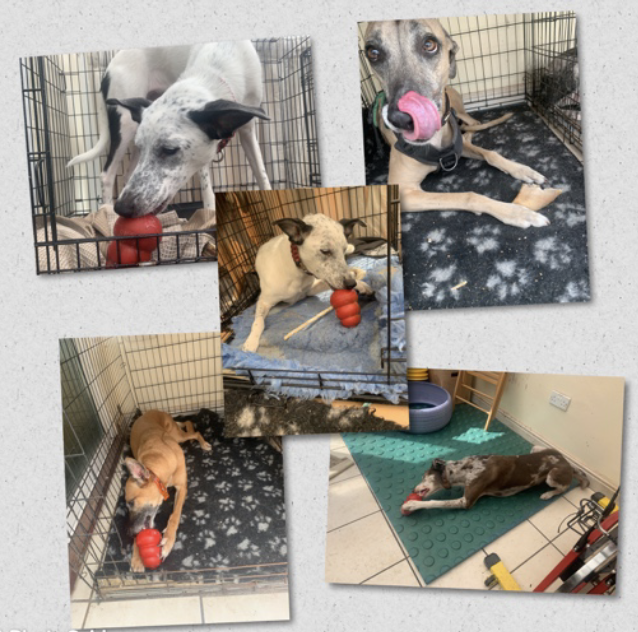Introducing Behaviourist & Trainer - Claire Martin on Home Alone After Lockdown
We are SO thrilled to announce that the wonderful Claire Martin of Chrysalis K9 has agreed to write a monthly blog for us! Here is a little info on Claire before we launch into our first post on Home Alone After Lockdown.
Claire Martin is a Dog Trainer and Behaviourist who lives in the West Midlands with 10 rescue sighthounds, 5 of whom are Podencos or Podenco crosses. She is also a part time teacher at a specialist school where her dogs work with young people. Claire competes at agility, lure coursing, canicross and scooter racing with her dogs and runs trick training classes, reactive dog training and agility, hoopers and lure coursing workshops for all breeds but particularly sighthounds. She adopted her first Podenco 5 years ago and became fascinated by the breeds quirky and fun natures and adaptable characters. Claire offers in-person and online behaviour advice to clients through her business Chrysalis K9.
If, like us, you are spending all day, every day at home with your dogs during the lockdown you might be wondering how they are going to cope when you have to go back to work. It’s a legitimate worry and its one that you can absolutely do something about. Our dogs love having us at home for sure but this likely can’t continue. Dogs are naturally social animals and being alone can be hard for them, but all the more so when they have been with their social group for so long. Currently many of you can only take one trip out to exercise a day so that again is likely to be with your dog. Shopping trips are probably the only time that those of us not going out to work are leaving our dogs and if there is more than one person in the home then its quite possible that they still aren’t being left alone. So how can we simulate time alone when we are all home?
During the day, if you are working at home, settle your dog in another room with a yummy chew like a cows hoof and work in a different room. Sure its lovely to have them snuggled with you but remember – this is for their long term happiness. Set them up for success. Try and stick to a routine of walking them in the morning and / or the evening – whatever you are allowed to do and then toilet them in between in the same routine as they would be cared for when you are back at work. However never leave them in distress, so if they aren’t happy in a different room from you, maybe set up a puppy pen where they can see you and give them their special chew there. The most important thing is that they are happy because if they are distressed alone then this will grow and make their alone time frightening.
If your dog already as aspects of separation distress when left alone then this is a great time to work on that. We use a technique called “flitting”. Literally popping out of sight for just as long as your dog is OK with and never any longer. Very gradually build the duration of the “flit” and yes – remember if 1 second is all they can cope with then 2 seconds is a doubling and that might be all you can achieve in the next step. We often say “go slow to go fast” – take baby steps and make sure that your dog is happy every step of the way.
Consider negotiating with members of your family to phase your returns to work back in such a way that your dog isn’t left alone. It’s likely that with the requirement for social distancing at work many of you are going to need to be more flexible about the hours you work and this could significantly benefit your dogs.
Consider checking out dog day-care provision locally to you – look for staff who are knowledgeable about dogs, avoid any that mention dominance or use punitive methods on the dogs in their care. If you have a sudden return to work then this could be a great way to help your dog get over the early days of being left.
The changes in the workplace that Covid 19 will bring about could have significant benefits for so many dogs that otherwise are home alone – homeworking is their dream – for some dogs, life will never be the same again!
I am often asked if getting a second dog will help a dog that has separation distress and the answer to this is – maybe….. it might be exactly what that dog needs, it might make absolutely no difference at all or it might result in 2 dogs that have separation distress.


